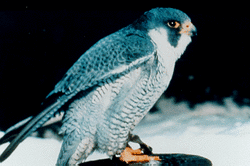
Connecticut, like almost every other state in the US, has several bird species that are endangered or in serious trouble. As of July 1, 2010, there were 50 birds in Connecticut that were considered endangered, threatened, or special concern birds. Every year, these birds’ numbers dwindle, due to excessive hunting or their lack of adaptations to dealing with humans. For example, the piping plover builds its nest in the middle of the beach, right on the ground, with no protection whatsoever. This makes it difficult for the eggs to survive to term, because of human traffic and predators. Thankfully, Connecticut has begun to put laws and regulations in place to ensure that these bird populations begin to grow and our state’s bird population will remain as diverse and unique as possible.
The list of birds endangered or threatened in Connecticut include many birds you will recognize, such as the Common Loon, the Bald Eagle, the Red-headed Woodpecker, the Eastern Meadowlark, and the Barn Owl. It is always astonishing to many people that the symbol of our great country, the Bald Eagle, is an endangered species. You would think that we would want to protect and defend the emblem of our country, but hunters have forced this majestic bird into near extinction. This list of 50 birds in need of our help also includes some names you may not recognize, due to the fact that they aren’t often seen because there are so few left. These include the Sharp-shinned Hawk, the Blue-winged Teal, the Whip-poor-will, the Bobolink, the Northern Parula, and the Roseate Tern. Some of these unfortunate birds are not only endangered on the state level, but also on the federal level. The full list of Connecticut’s endangered, threatened, or special concern birds can be found here
Luckily, Connecticut has taken an active role in trying to ensure that all of its natural bird populations remain intact and continue to grow. In 1989, Connecticut Legislature passed Public Act 89-224, titled, “An Act Establishing a Program for the Protection of Endangered and Threatened Species.” The purpose of passing this act was to “conserve, protect, restore, and enhance any endangered or threatened species and their essential habitat” (State of Connecticut Department of Environmental Protection Bureau of Natural Resources 2010). CT’s Department of Environmental Protection conducted a series of studies on the endangered birds, along with other animals and plants, to determine what they needed to survive and thrive.
Many conservationists believe that only the “popular” animals get the most attention and money, and to an extent, that is unfortunately true. As mentioned above, you many not recognize many of these birds, by name or sight. If you don’t recognize the bird, you can’t expect to help aid a conservation attempt. By educating yourself and your peers of the many different endangered species in CT, and around the world, you can help all of these animals in danger receive the attention and funds that they deserve, because we are most often the ones taking away their nesting grounds or hunting them.
Despite this, many sanctuaries exist throughout the state where endangered or threatened birds find comfortable and relatively risk-free homes. In fact, there are five Audubon Society centers in Connecticut, in Fairfield, Glastonbury, Pomfret, and Milford, where you can spot many of these endangered species in such great abundance, you may not even realize they are endangered! These centers are kept impeccably clean and they try as hard as possible to ensure the safety and protect of birds who may not have enough members or may not have evolved enough to fend for themselves in the wild. There are even some locations within Manchester where you can see certain species that are not common to the rest of Manchester and Connecticut.
If we all work together to support all of the furry, feathery, scaly, and leafy cohabiters of our beautiful planet, hopefully we will be able safeguard their future and keep our planet balanced and as Mother Nature created it.
Many conservationists believe that only the “popular” animals get the most attention and money, and to an extent, that is unfortunately true. As mentioned above, you many not recognize many of these birds, by name or sight. If you don’t recognize the bird, you can’t expect to help aid a conservation attempt. By educating yourself and your peers of the many different endangered species in CT, and around the world, you can help all of these animals in danger receive the attention and funds that they deserve, because we are most often the ones taking away their nesting grounds or hunting them.
Despite this, many sanctuaries exist throughout the state where endangered or threatened birds find comfortable and relatively risk-free homes. In fact, there are five Audubon Society centers in Connecticut, in Fairfield, Glastonbury, Pomfret, and Milford, where you can spot many of these endangered species in such great abundance, you may not even realize they are endangered! These centers are kept impeccably clean and they try as hard as possible to ensure the safety and protect of birds who may not have enough members or may not have evolved enough to fend for themselves in the wild. There are even some locations within Manchester where you can see certain species that are not common to the rest of Manchester and Connecticut.
If we all work together to support all of the furry, feathery, scaly, and leafy cohabiters of our beautiful planet, hopefully we will be able safeguard their future and keep our planet balanced and as Mother Nature created it.